ABC Business Reporter, Gareth Hutchens, cited Australian Housing and Urban Research Institute (AHURI) research claiming that over the past 25 years, the share of high income households living in the private rental market has tripled in Australia.
This growth in high-income renters has driven lower-income households into insecure housing and homelessness, according to Hutchens.
“In 1996, high-income households accounted for 8% of private renters; now they account for 24%”, writes Hutchens.
“The share of private rental stock that’s affordable for Australia’s lowest-income renters has fallen from 60% to just 13%”.
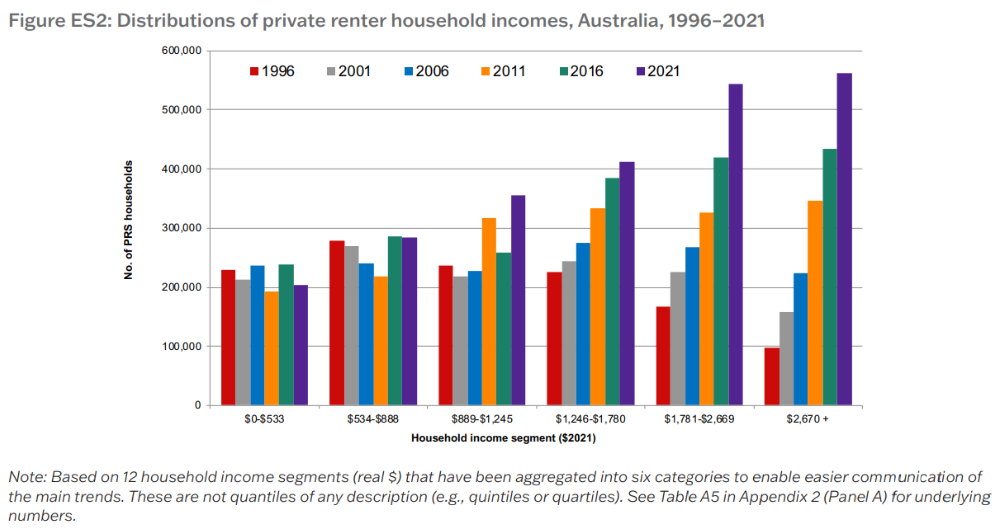
“As more high-income households have shifted into the private rental market, more low-income renters are struggling to compete for rental housing and are being squeezed out of the formal renting sector into informal living arrangements and homelessness”, Hutchens says.
The AHURI authors warn that Australia’s reliance on the private market to provide the essential and basic need for housing for people on low incomes is “socially and economically unsustainable”.
They, therefore, want to see more investment in social housing. Because “only some form of social housing can, and will, do this”, they argue.
I don’t disagree with the AHURI’s sentiment. Australia’s rental market is a disgrace. We have also seen a collapse in the provision of public housing over many decades:
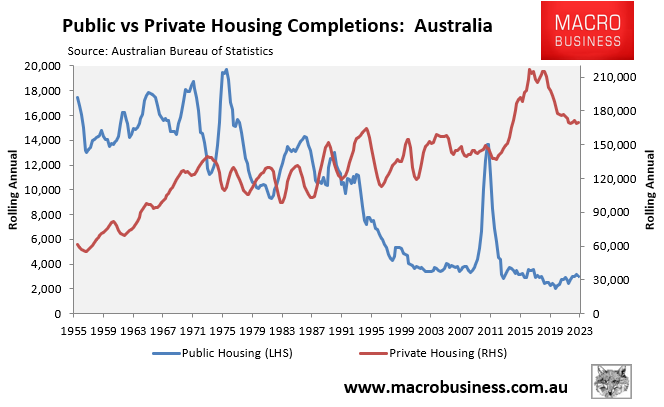
However, the AHURI research glosses over the impact of the federal government’s mass immigration policy on the private rental market.
The federal government massively ramped-up net overseas migration from the mid-2000s, which has seen Australia’s population swell by more than 8 million people this century alone:
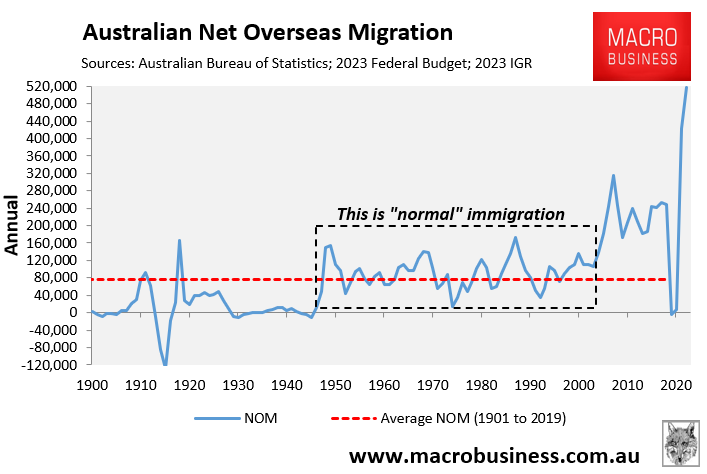
The boom in population growth has outrun the overall supply of dwellings:
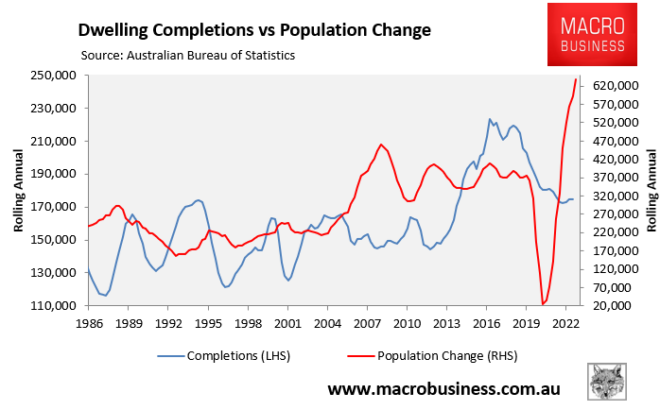
It has also contributed to the extreme shortage of public housing:
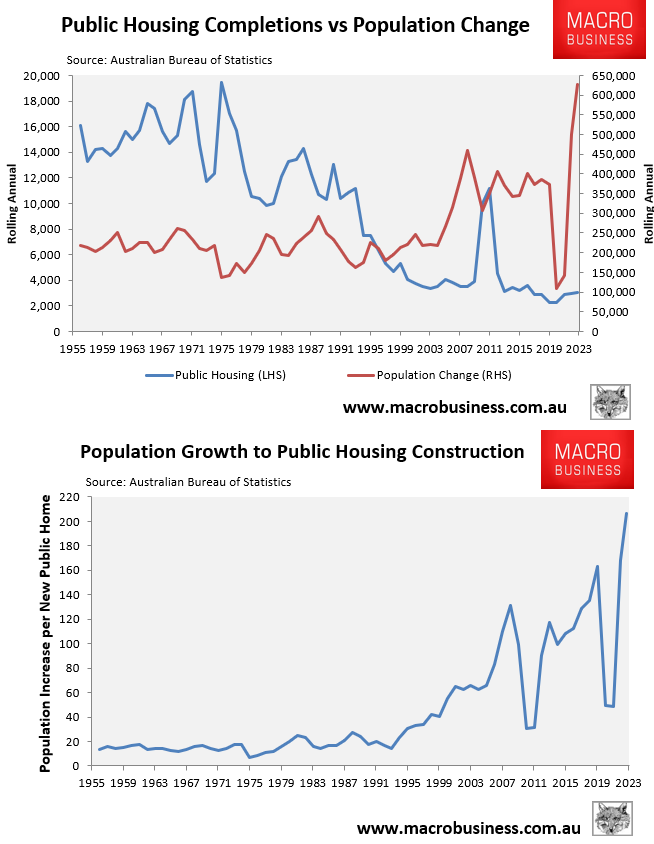
In short, the federal government has approved more renters to arrive every month than the extra housing supply, which has driven the rental crisis.
There is no need to blame those who earn more. It is a policy induced housing shortage, driven by reckless levels of net overseas migration.

